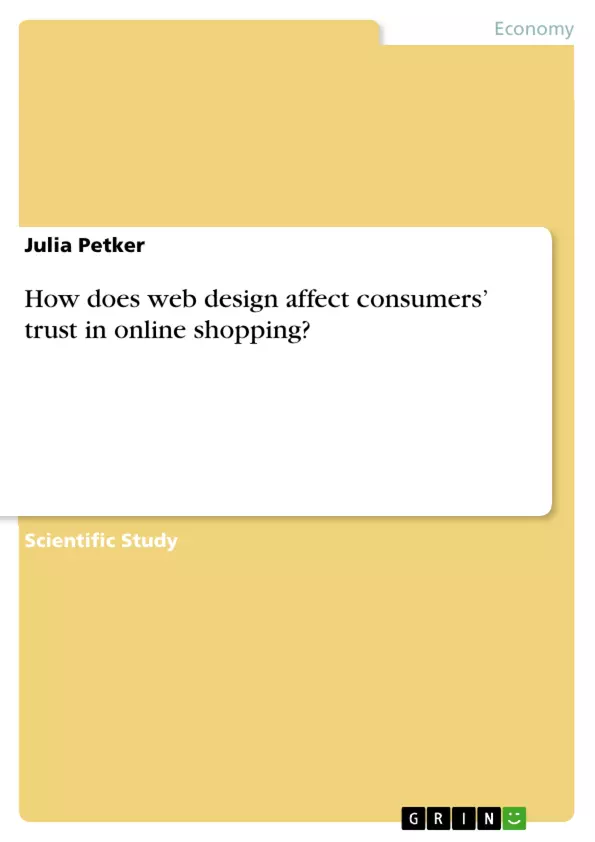The purpose of this research paper is to review relevant literature on customer trust and purchase intention, and explore these elements in the context of the quality of visuals. The secondary data has been gained through an extensive literature review, whereas the primary data has been collected through a survey.
This study revealed that the visual appeal of websites influences customers’ trust in companies, and that trust also influences their purchase intention.
Inhaltsverzeichnis (Table of Contents)
- Introduction
- Literature review
- Online Purchase Intention and Trust
- Design aesthetics and website design
- Influence of website design features on trust
- Hypothesis development
- Theoretical Foundations
- Research methodology
- Research design
- Methodological Connection
- Process of data collection
- Analysis
- Research limitation
- Data analysis
- Discussion and conclusion
- Managerial implications
- Limitations and future research
- References
Zielsetzung und Themenschwerpunkte (Objectives and Key Themes)
This research paper aims to explore the relationship between web design and consumer trust in online shopping. It investigates how visual elements of websites influence customers' trust in online retailers and subsequently their intention to make purchases.
- The influence of visual appeal on customer trust
- The impact of trust on purchase intention
- The importance of website design in the online shopping environment
- The role of design aesthetics in shaping customer perceptions
- The relationship between user experience and trust
Zusammenfassung der Kapitel (Chapter Summaries)
- Introduction: This chapter provides an overview of the growing importance of online shopping and the need for companies to prioritize trust-building strategies. It highlights the crucial role of web design in influencing customer trust and purchase intentions.
- Literature review: This chapter reviews existing research on online purchase intention, trust, and the influence of website design. It explores various studies that demonstrate the link between visual appeal, customer trust, and purchase behavior.
- Hypothesis development: This chapter outlines the theoretical framework and conceptual model used in the research. It presents two hypotheses: the quality of visuals affects trust in online shopping, and trust influences purchase intent.
- Research methodology: This chapter details the research design, methodology, and data collection process. It describes the use of a quantitative survey method and explains the rationale behind its selection.
- Data analysis: This chapter focuses on the analysis of the data collected through the survey. It discusses the methods employed to assess the relationships between visual appeal, trust, and purchase intention.
Schlüsselwörter (Keywords)
This research paper focuses on the impact of web design, specifically visual elements, on consumer trust and purchase intention in the context of online shopping. Key concepts include trust, purchase intention, visual appeal, brand image, quality of visuals, user experience, and website design.
- Arbeit zitieren
- Julia Petker (Autor:in), 2022, How does web design affect consumers’ trust in online shopping?, München, GRIN Verlag, https://www.grin.com/document/1318807



